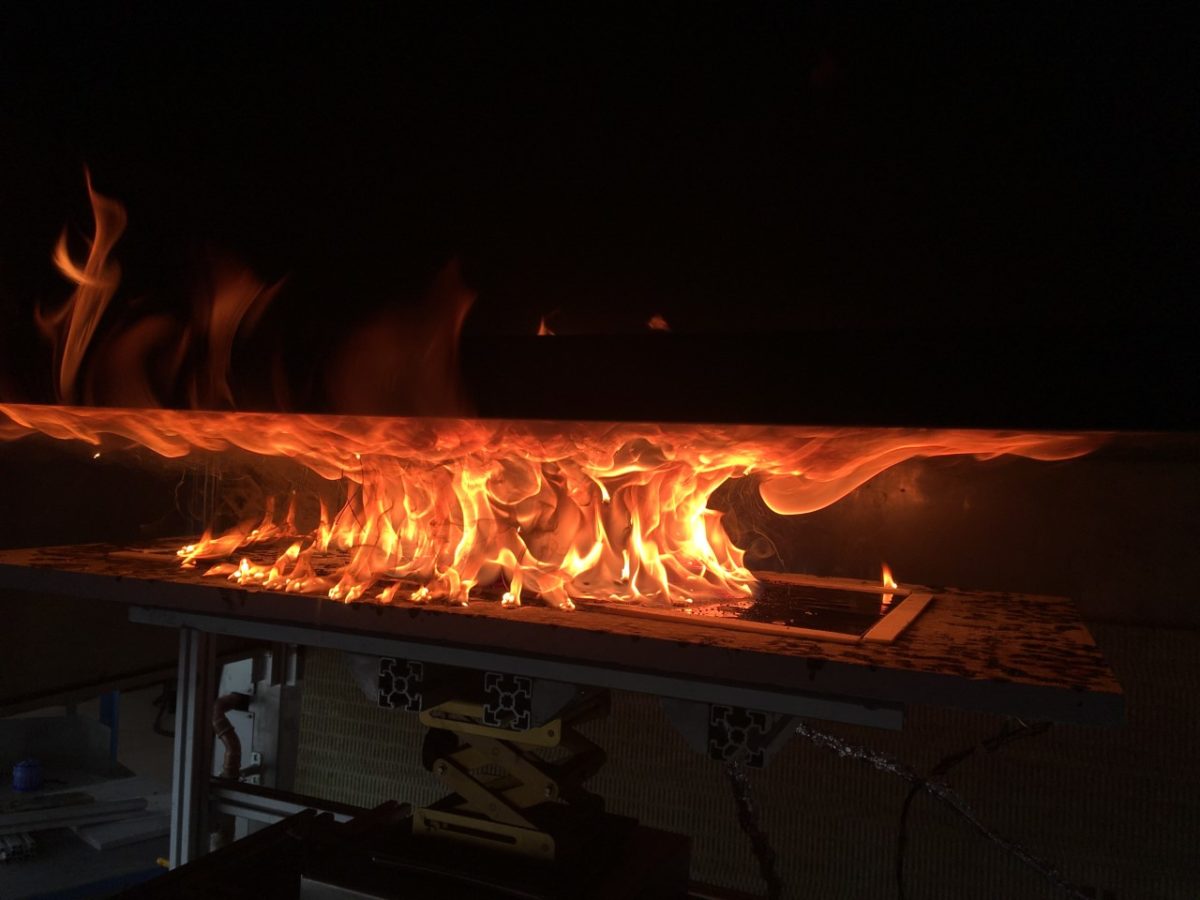Researchers at the University of Edinburgh and the Technical University of Denmark have conducted experiments which showed the distance between solar modules and flat roofs in commercial PV systems is a decisive factor determining the extent of fire accidents.
The scientists analyzed fire dynamics and flame spread on the substrate underneath panels and concluded the shorter the distance between the panels and roof is, the higher the probability of larger and more destructive fires.
With most commercially available solar modules manufactured with non-combustible materials, the researchers say fire risk assessments should consider not only increased fire loads and the possibility of ignition, but also the different fire dynamics related to rooftop construction.
Heat flux
The scientists specify, in fact, the energy added by the combustible part of PV panels is insignificant compared to the total re-radiated heat flux from the devices – the energy fed back to a fire by reflection and from accumulated smoke. That energy is responsible for spreading fires throughout a roof.
“Considering the low additional heat flux emitted due to the energy release from the panels, the main phenomenon responsible for the increased heat flux is the re-radiation from the deflected flame,” the scientists noted. “As researchers within fire safety engineering, we try to be aware of any potential risk related to new construction methods and new technologies, whether it is lithium batteries, new insulation materials or PV systems.”
Limited industry concern
“Overall, it seems that the PV industry has a limited interest in our research, which we find unfortunate, as an increased cooperation would result in better research and, thereby, a shorter path to an overall understanding and solution of the issue,” said Jens Steemann Kristensen, co-author of the paper Fire‐induced reradiation underneath photovoltaic arrays on flat roofs, published on the Wiley Online Library. “For example,” added Kristensen, “some of the research is limited by a constant shortage of PV modules for experiments.”
The researcher told pv magazine the use of proper roofing membranes, combined with a better geometry of PV installation could significantly decrease the possibility of fire propagation beneath such arrays.
“Although the PV modules do not burn, they facilitate the drastic flame spread upon the roofing membrane as the combined heat flux towards the roof construction exceeds the critical heat flux, which is the heat flux required for sustained burning through ignition of new material,” said the author. “Thus, when combining materials ‘compliant’ with individual test methods, the interaction between the components modify the overall system behavior and bypass the safety precautions of a normal commercial roof construction.”
Bigger gap, bigger bill?
Kristensen accepted leaving a larger gap underneath modules could raise installation costs but said the difference should not be significant.
“Other issues are the aesthetics and the influence of the wind load,” he said. “All potential mitigation methods are screened but the overall issue is the behavior of the hosting roof. That is the roofing membrane and the subjacent [underlying] insulation material, which are crucial parts of the building envelope and, thereby, the key to [preventing] vertical spread into the property.”
Kristensen added, more research is needed to understand how roofing materials react to fire when exposed to heat flux and how the elevation and inclination of panels modifies that flux and, as a consequence, the fire. The research group also intends to investigate the influence of wind on fire spread.
This content is protected by copyright and may not be reused. If you want to cooperate with us and would like to reuse some of our content, please contact: editors@pv-magazine.com.




Two more factors to consider.
1. Higher mounting will tend to increase annual yield especially for bifacial panels as panels stay cooler, and receive more reflected light.
2. Research is also needed on the effect of back to back East West mounted arrays as these in effect double the row width whilst covering more of the roof so making it harder for heat to be lost.
Your article was very intereting and we would like to have information if possible:
===Where to find the original publication of solar panel heights from roof top;
===How to get regular information on your PV works.
Thanks and Best Regards.
Cordially
Godwill Dr. Igwe, D.Eng.. (Milan, Italy)
P.Eng. (Ontario, Canada)
Hi Dr Igwe, The article contains a link to the academic paper, which can also be found here: https://onlinelibrary.wiley.com/doi/abs/10.1002/fam.2494
Hopefully that will answer your question.
Dear Dr. Igwe,
As written by Max, we have published two papers, with a third paper on the way. The results related to this article will be presented herein. If you send me an email, I will try to remember you, when the papers is published.
Cheers,
Jens Steemann Kristensen – University of Edinburgh
J.kristensen@ed.ac.uk